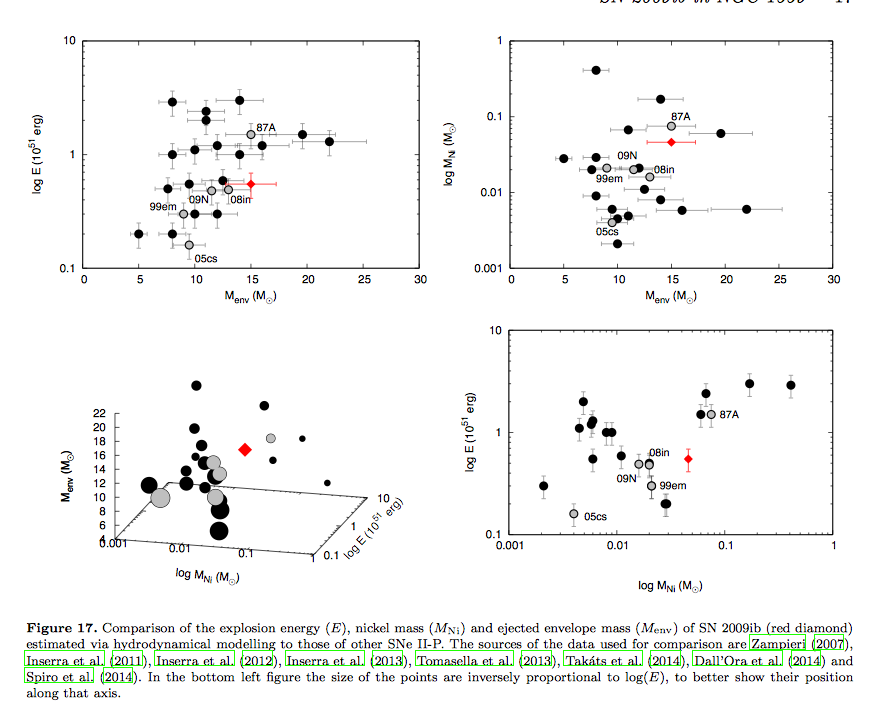Padova-Asiago Supernova Group
Highlights
SN 2009ib: A Type II-P Supernova with an Unusually Long Plateau
Takats, K. et al. 2015, MNRAS 450, 3137 (link to pdf)
We present optical and near-infrared photometry and spectroscopy of SN 2009ib, a Type II-P supernova in NGC 1559. This object has moderate brightness, similar to those of the intermediate-luminosity SNe 2008in and 2009N. Its plateau phase is unusually long, lasting for about 130 days after explosion. The spectra are similar to those of the subluminous SN 2002gd, with moderate expansion velocities. We estimate the ^56Ni mass produced as $0.046 \pm 0.015\,{\rm M}_{\sun}$. We determine the distance to SN 2009ib using both the expanding photosphere method (EPM) and the standard candle method. We also apply EPM to SN 1986L, a type II-P SN that exploded in the same galaxy. Combining the results of different methods, we conclude the distance to NGC 1559 as D=19.8+/-2.8 Mpc. We examine archival, pre-explosion images of the field taken with the Hubble Space Telescope, and find a faint source at the position of the SN, which has a yellow colour ((V-I)0=0.85 mag). Assuming it is a single star, we estimate its initial mass as $M_{\rm ZAMS}=20\,{\rm M}_{\sun}$. We also examine the possibility, that instead of the yellow source the progenitor of SN 2009ib is a red supergiant star too faint to be detected. In this case we estimate the upper limit for the initial zero-age main sequence mass of the progenitor to be $\sim 14-17\,{\rm M}_{\sun}$. In addition, we infer the physical properties of the progenitor at the explosion via hydrodynamical modelling of the observables, and estimate the total energy as ~0.55x10^51~erg, the pre-explosion radius as $\sim 400\,{\rm R}_{\sun}$, and the ejected envelope mass as $\sim 15\,{\rm M}_{\sun}$, which implies that the mass of the progenitor before explosion was $\sim 16.5-17\,{\rm M}_{\sun}$. 47
